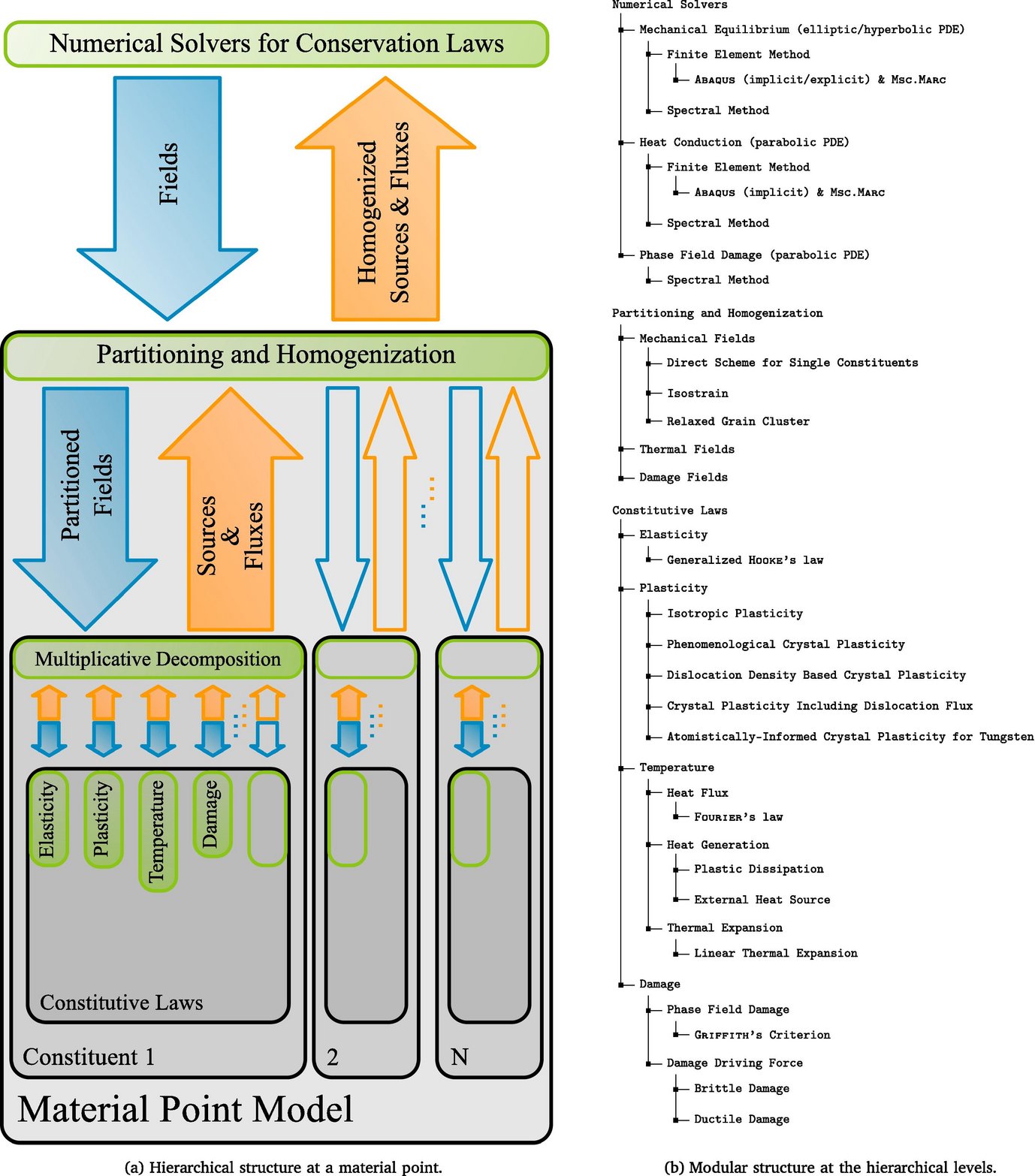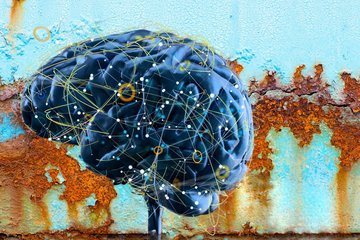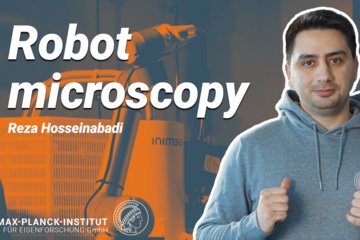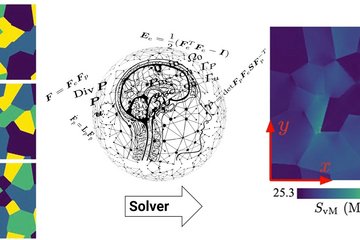
DAMASK - the Düsseldorf Advanced Material Simulation Kit
Crystal Plasticity (CP) modeling [1] is a powerful and well established computational materials science tool to investigate mechanical structure–property relations in crystalline materials. It has been successfully applied to study diverse micromechanical phenomena ranging from strain hardening in single crystals to texture evolution in polycrystalline aggregates.
However, when considering the increasingly complex microstructural composition of modern alloys and their exposure to—often harsh—environmental conditions, the focus in materials modeling has shifted towards incorporating more constitutive and internal variable details of the process history and environmental factors into these structure–property relations. Technologically important fields of application of enhanced CP models include phase transformations, hydrogen embrittlement, irradiation damage, fracture, and recrystallization.
With the Düsseldorf Advanced Material Simulation Kit (DAMASK) [2] we undertake the effort to provide an open, flexible, and easy to use implementation to the scientific community that is highly modular and allows the use and straightforward implementation of different types of constitutive laws and numerical solvers. The internal modular structure of DAMASK follows directly from the hierarchy inherent to the employed continuum description. The highest level handles the partitioning of the prescribed field values on a material point between its underlying microstructural constituents and the subsequent homogenization of the constitutive response of each constituent. The response of each microstructural constituent is determined, at the intermediate level, from the time integration of the underlying constitutive laws for elasticity, plasticity, damage, phase transformation, and heat generation among other coupled multi-physical processes of interest.
DAMASK is free and open source software. It is developed by the Integrated Computational Materials Engineering and Theory and Simulation groups at MPIE together with Philip Eisenlohr at Michigan state University and Pratheek Shanthraj at University of Manchester. DAMASK simulations have been used in many research collaborations with internal [3] and external [4] contributors with experimental expertise. Therefore, as special focus of the development is the seamless integration into coupled computational-experimental workflows [5].













